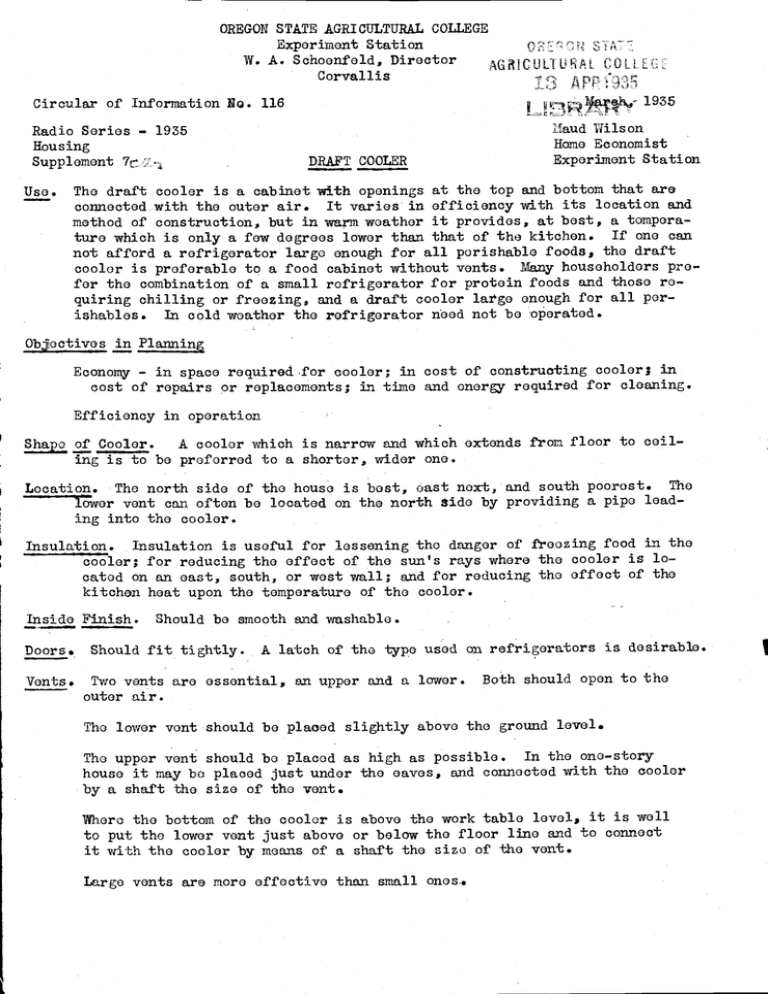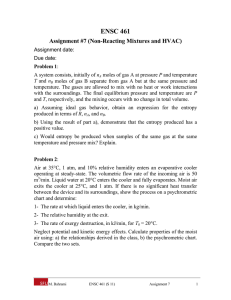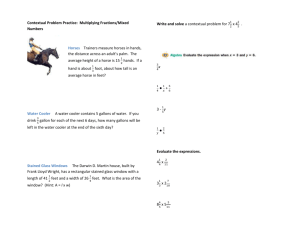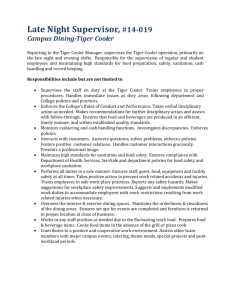AGICULTUAL COLEC 1F
advertisement

OREGON STATE AGRICULTURAL COLLEGE Experiment Station STAT, W. A. Schoenfeld, Direotor AGICULTUAL COLEC Corvallis i.. 1F 1935 Circular of Information No. 116 Radio Series - 1935 Housing Supplement Use. DRAFT COOLER Maud Wilson Hone Economist Experiment Station The draft cooler is a cabinet with openings at the top and bottom that are comnootedwith the outer air. It varies in efficiency with its location and method of construction, but in warm weather it provides, at beet, a tomporature which is only a few degrees lower than that of the kitchen. If one can not afford a refrigerator large enough for all perishable foods, the draft cooler is preferable to a food cabinet without vents. ivrany householders prefer the combination of a small refrigerator for protein foods and those requiring chilling or freezing, and a draft cooler latge enough for all perishables. In cold weather the refrigerator need not be operated. Objoetivos in Planning Economy - in space roquired.for cooler; in coat of constructing cooler; in cost of repairs or replacements; in time and energy required for cleaning. Efficiency in operation A cooler which is narrow and which extends from floor to coilShapo of Cooler. ing is to be preferred to a shorter, wider one. The Location. Thenorth side of the house is best, Oas± next, and south poorest. lower vent can often be located on the north Side by providing a pipe leading into the cooler. Insulation. Insulation is useful for lessening the danger of freezing food in the cooler; for reducing the effect of the sun's rays where the cooler is located on an east, south, or west wall; and for reducing the effect of the kitchen heat upon the temperature of the cooler. Inside Finish. Doors. Vents. Should be smooth end washable. Should fit tightly. A latch of the type used on refrigerators is desirable. Two vents are essential, an upper and a lower, outer air. Both should open to the The lower vent -should be placed slightly above the ground level. In the one-story The upper vent should be placed as high as possible. house it may be placed just under the eaves, and connected with the cooler by a shaft the size of the vent. Whore the bottom of the cooler is above the work table level, it is well to put the lower vent just above or below the floor line and to connect it with the cooler liv means of a shaft the size of the vent. Large vents are more effective than small ones.. 2. (Continued) Vents. In some locations Vents should be screened against insects and vermin. a fino copper screen is advisable. The screen should be removable for cleaning. Vents should be provided with shutters which can be reached easily from the inside. Whore the vent is beneath the floor line, there should be a cleanout opening in the ptpo leading from cooler to the outer air. Incoming air is cooler when shrubbery is planted in front of the vent. Shelves. Shelves should offer as little resistance as possible to the air current. Heavy, rust-proof, wire shelves are desirable. Next in order of preference are shelves made of wooden slats. Solid shelves may be used if they are 2" narrower than the cooler itself, and if alternate shelves are placed with the open space next to the walle Shelves should be easily removed for cleaning. as to distanco apart. They should be adjustable Combination Draft Cooler and Lift. For the home having no refrigerator, the cornd cooler Is practical. If the kitchen is directly above binatioilift a comontod cellar where canned goods and other stores are kept, the lift can he lowered to tho cellar floor in warm weather, and kept on a level with the kitchen at other tjmes. If it is impractical to locate the food storage room directly underneath the kitchen, a shaft can ho built of insulating material into which the lift can be lowered in warm weather. Or if there is no basement, a omented pit eight or ten feet deep will serve the same purpose. A cooler which is adequate for the needs of most farm households has Dimensions an outside width of 24", length 30t2, and extends from floor to ceiling. Seven shelves are required. This provides space within easy reach for all perishables, including left ovors and fruits and vegetables brought in from orchard and garden. Upper shelves can be used for oè.rned goods and seldom-used supplies. If vegetables and thick-skinned fruits are kept elsewhere (as on the back porch) a cooler above the work counter provides adequate space for other perishables.




